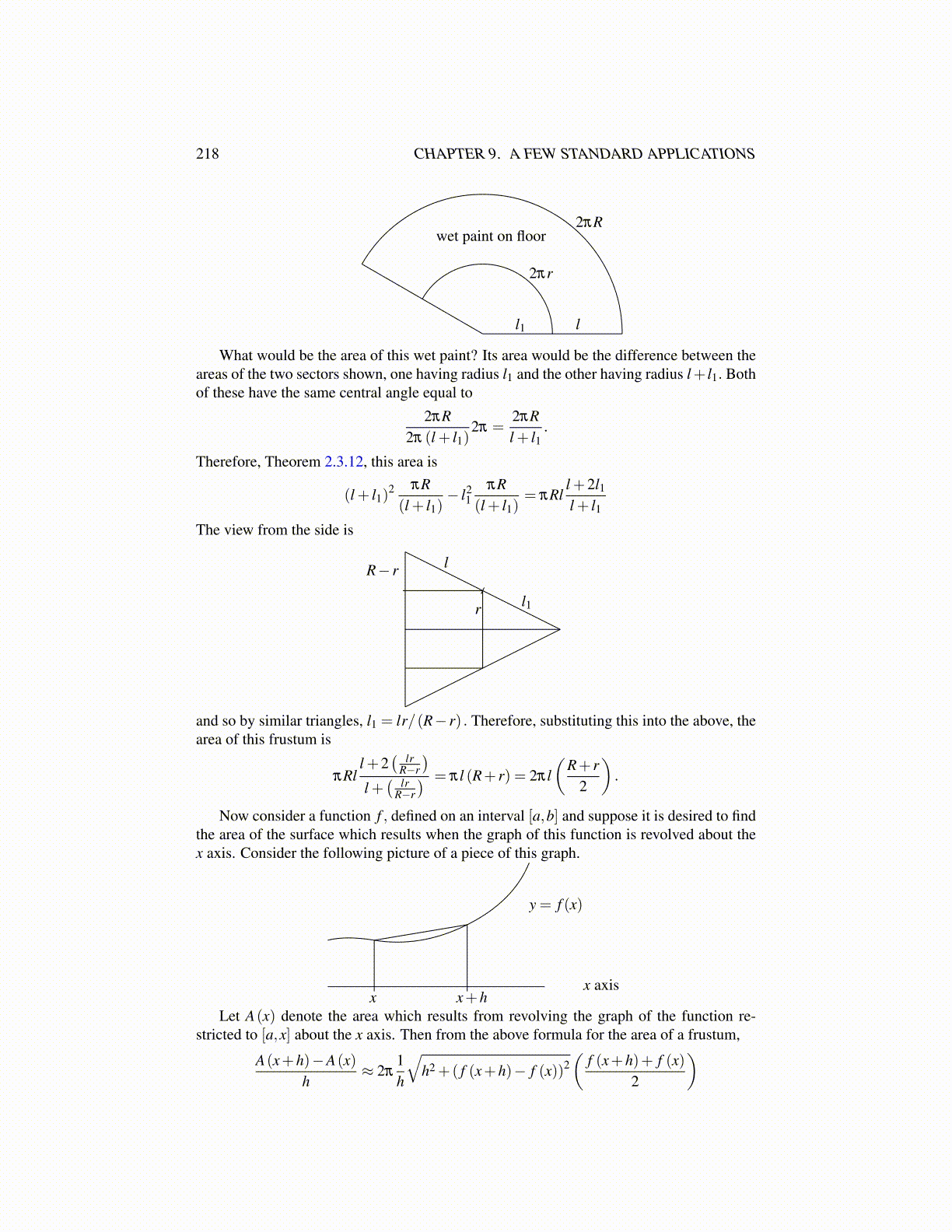
218 CHAPTER 9. A FEW STANDARD APPLICATIONS
ll1
wet paint on floor2πR
2πr
What would be the area of this wet paint? Its area would be the difference between theareas of the two sectors shown, one having radius l1 and the other having radius l+ l1. Bothof these have the same central angle equal to
2πR2π (l + l1)
2π =2πRl + l1
.
Therefore, Theorem 2.3.12, this area is
(l + l1)2 πR(l + l1)
− l21
πR(l + l1)
= πRll +2l1l + l1
The view from the side is
l1
lR− r
r
and so by similar triangles, l1 = lr/(R− r) . Therefore, substituting this into the above, thearea of this frustum is
πRll +2
( lrR−r
)l +( lr
R−r
) = πl (R+ r) = 2πl(
R+ r2
).
Now consider a function f , defined on an interval [a,b] and suppose it is desired to findthe area of the surface which results when the graph of this function is revolved about thex axis. Consider the following picture of a piece of this graph.
x+hxx axis
y = f (x)
Let A(x) denote the area which results from revolving the graph of the function re-stricted to [a,x] about the x axis. Then from the above formula for the area of a frustum,
A(x+h)−A(x)h
≈ 2π1h
√h2 +( f (x+h)− f (x))2
(f (x+h)+ f (x)
2
)